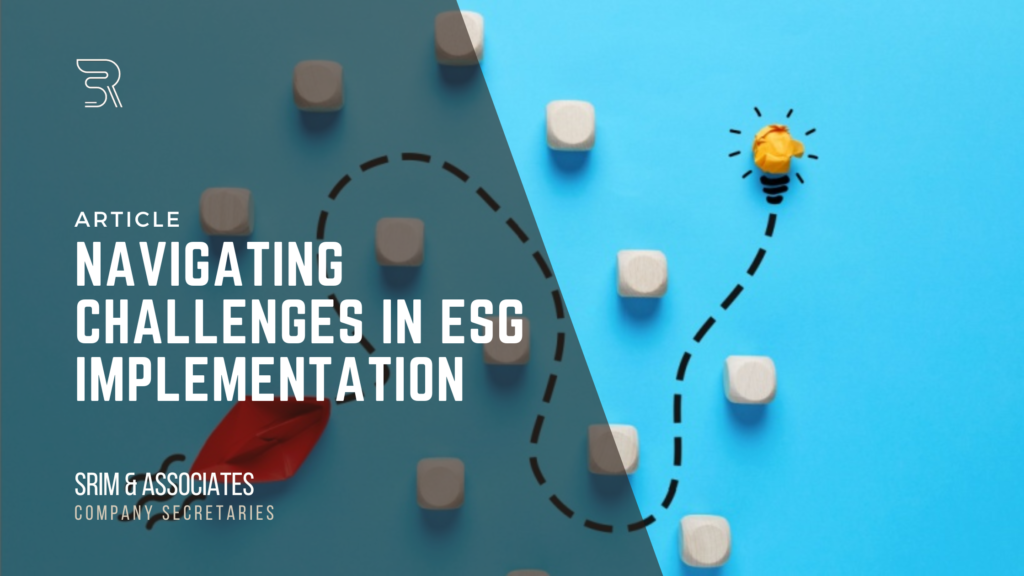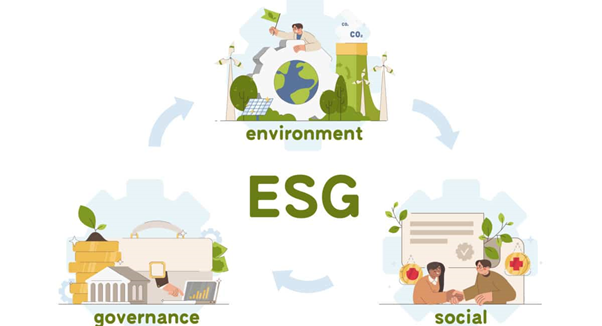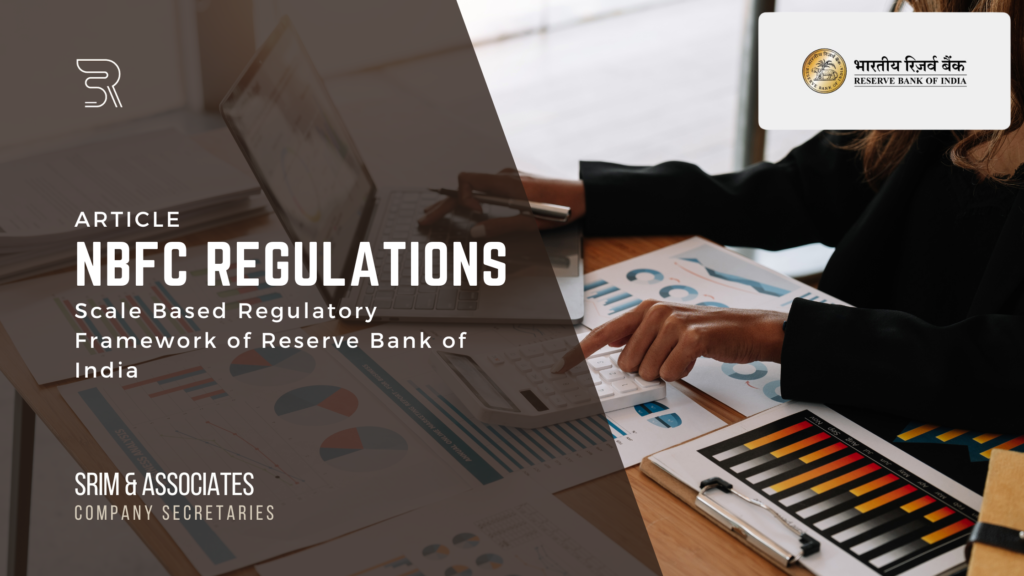
The integration of Environmental, Social, and Governance (ESG) principles has become a cornerstone of modern business strategy, redefining how organizations operate in a sustainability-conscious world. While ESG implementation offers immense opportunities for businesses to drive innovation, build resilience, and enhance stakeholder trust, the path to achieving these goals is often fraught with challenges. As we conclude our ESG series, this article delves into the common barriers to ESG implementation, explores strategies to overcome them, and outlines the future of ESG in India and beyond.

The Complexity of ESG Implementation
Successfully embedding ESG principles into business operations is a multifaceted endeavour, involving the alignment of environmental, social, and governance objectives with organizational goals. Despite its significance, companies frequently encounter obstacles such as:
- Fragmented ESG Standards and Regulations
The lack of a unified global ESG framework creates confusion among businesses. Organizations must navigate varying standards, such as the Global Reporting Initiative (GRI), Sustainability Accounting Standards Board (SASB), and Task Force on Climate-Related Financial Disclosures (TCFD), while ensuring compliance with local regulations like SEBI’s Business Responsibility and Sustainability Report (BRSR).
- Data Collection and Standardization
Gathering accurate, consistent, and comparable ESG data across diverse operations remains a significant challenge. Many businesses lack the necessary tools, expertise, and processes to collect and analyse ESG data effectively, leading to reporting gaps and inefficiencies.
- Balancing Short-Term Pressures with Long-Term Goals
Companies often struggle to reconcile immediate financial objectives with long-term ESG commitments. The pressure to deliver quarterly profits can deter businesses from investing in sustainability initiatives that may yield returns over an extended period.
- Stakeholder Resistance
Internal and external stakeholders may resist ESG initiatives due to a lack of awareness, conflicting priorities, or skepticism about the tangible benefits of sustainability. This resistance can hinder the adoption of ESG principles and slow progress.
- Risk of Greenwashing
The rising demand for ESG disclosures has led to instances of “greenwashing,” where companies exaggerate or falsify their sustainability achievements. Such practices can undermine stakeholder trust and expose businesses to reputational and legal risks.
“Navigating ESG challenges today is about building solutions that bridge compliance with innovation.”
Strategies to Overcome ESG Challenges
To navigate these challenges effectively, businesses must adopt a proactive and holistic approach to ESG implementation:
- Develop a Clear ESG Roadmap
- Conduct materiality assessments to identify ESG issues most relevant to the organization and its stakeholders.
- Set measurable ESG goals aligned with industry benchmarks and international frameworks.
- Define a phased approach to implementation, prioritizing high-impact areas.
- Leverage Technology and Data Analytics
- Invest in digital tools for real-time ESG data collection, monitoring, and reporting.
- Utilize advanced analytics to identify trends, assess risks, and measure progress.
- Ensure data transparency and standardization to build stakeholder confidence.
- Foster a Culture of Sustainability
- Engage leadership to champion ESG initiatives and integrate sustainability into decision-making processes.
- Provide training and capacity-building programs to enhance employee awareness and skills.
- Collaborate with external stakeholders, including investors, communities, and industry peers, to drive collective impact.
- Strengthen Governance and Accountability
- Establish robust governance structures to oversee ESG implementation and monitor compliance.
- Engage independent auditors to verify ESG data and enhance credibility.
- Communicate progress through transparent and consistent reporting mechanisms.
- Build Resilience Against Greenwashing
- Ensure that ESG claims are backed by verifiable data and third-party certifications.
- Focus on genuine, impactful initiatives rather than superficial measures.
- Develop a communication strategy that highlights both achievements and challenges, fostering authenticity.
Case Study: Infosys
Infosys, a leading Indian IT services company, offers an exemplary case of overcoming ESG challenges. By embedding sustainability into its core strategy, Infosys achieved carbon neutrality in 2020, ahead of its 2030 target. The company adopted the following measures:
- Robust ESG Governance: Infosys’ Board-level Sustainability Committee oversees ESG initiatives, ensuring alignment with global standards.
- Investment in Renewable Energy: Over 50% of the company’s energy needs are met through renewable sources, supported by green power procurement and solar installations.
- Transparent Reporting: Infosys publishes comprehensive ESG disclosures in line with GRI and SASB frameworks, enhancing stakeholder trust.
- Community Engagement: Through its CSR programs, Infosys focuses on education, healthcare, and rural development, creating long-term societal impact.
Despite challenges such as regulatory complexities and data standardization, Infosys’ commitment to innovation, governance excellence, and stakeholder collaboration has positioned it as a global ESG leader.
The Future of ESG in India
India’s ESG landscape is rapidly evolving, driven by regulatory developments, investor expectations, and societal demands. The introduction of SEBI’s BRSR framework marks a significant step toward institutionalizing ESG reporting among India’s top 1,000 listed companies. As businesses embrace ESG principles, the following trends are likely to shape the future:
- Increased Integration of Technology: Advanced technologies such as AI, blockchain, and IoT will play a pivotal role in streamlining ESG processes and enhancing data accuracy.
- Focus on Supply Chain Sustainability: Companies will prioritize ESG practices across their supply chains, addressing environmental and social risks at every stage.
- Emergence of ESG-Linked Financing: Sustainable bonds and green loans will gain traction, incentivizing businesses to adopt ambitious ESG targets.
Greater Stakeholder Collaboration: Businesses, governments, and civil society will collaborate to address systemic challenges such as climate change and social inequality.
Conclusion
As the ESG series concludes, it is evident that the journey toward sustainability is as challenging as it is rewarding. By acknowledging and addressing the barriers to ESG implementation, businesses can unlock new opportunities for growth, resilience, and societal impact. The ESG roadmap is not merely a compliance exercise; it is a strategic imperative for building a sustainable and inclusive future.
Through collective effort, innovation, and unwavering commitment, businesses can lead the way in transforming challenges into milestones on the path to ESG excellence. Let this series serve as a guide and inspiration for organizations to embrace ESG as a catalyst for long-term success.
"ESG implementation is not a choice; it’s an imperative for businesses to stay resilient and relevant in a dynamic global landscape.”
Disclaimer:
The content of this article is intended for informational purposes only and should not be construed as professional advice. While we strive to ensure the accuracy and reliability of the information provided, we make no warranties or representations regarding its completeness or applicability. Readers are encouraged to seek professional guidance tailored to their specific circumstances. The views and opinions expressed in the article are those of the author and do not necessarily reflect the official policy or position of our organization.




